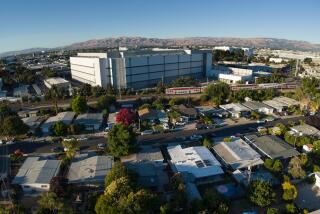Solar Studies at Caltech
- Share via
I was happy to see your extensive description of current advances in solar research in (Metro, Jan. 11). Unfortunately, the media are often more fascinated by distant galaxies and the birth of the universe than by our own star, which we can learn so much about. So we were glad to see some attention paid to it.
However, the article neglected to point out that Southern California is the world’s greatest center of solar research, and there are several other centers besides Mt. Wilson. So we are unhappy at being left out of the picture. At Caltech we operate the most extensive program of solar studies in the world. Our observatory in the middle of Big Bear Lake is probably the best facility for optical solar observations anywhere, and our radio telescopes at Owens Valley constitute the only solar radio observatory in the United States. In addition, we have a station at Tel Aviv University in Israel which makes film records of the Sun when we cannot see it from Pasadena.
Although federal funds for research have been sharply declining in recent years, the development of new technology has enabled us to make great new strides in our solar observations and observe a number of fascinating new phenomena on the Sun. As sunspot activity increases as we go into the new sunspot cycle, we expect new exciting results on the processes of solar activity. Groups at Caltech and Lockheed Palo Alto are working on a new solar telescope for space called High-Resolution Solar Observatory which will explore the Sun in higher resolution.
In addition to the Caltech program, there is an active program of solar research at the San Fernando Observatory, originally built by Aerospace Corp. and now operated by Cal State Northridge. And at Stanford, the Wilcox Solar Observatory follows the global properties of the Sun.
There are marvelous and fascinating problems to understand our very own star.
HAROLD ZIRIN
Director, Caltech
Big Bear’s Solar Observatory






